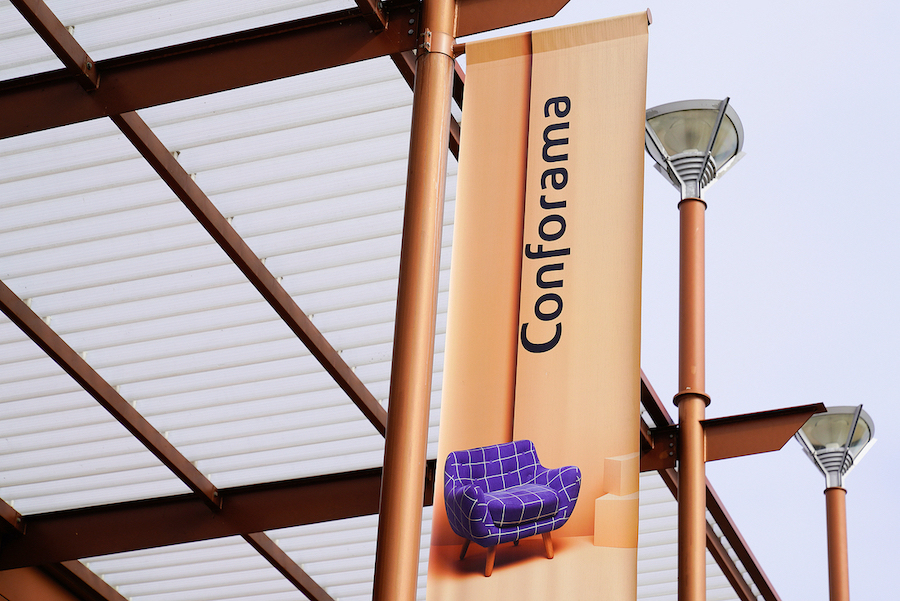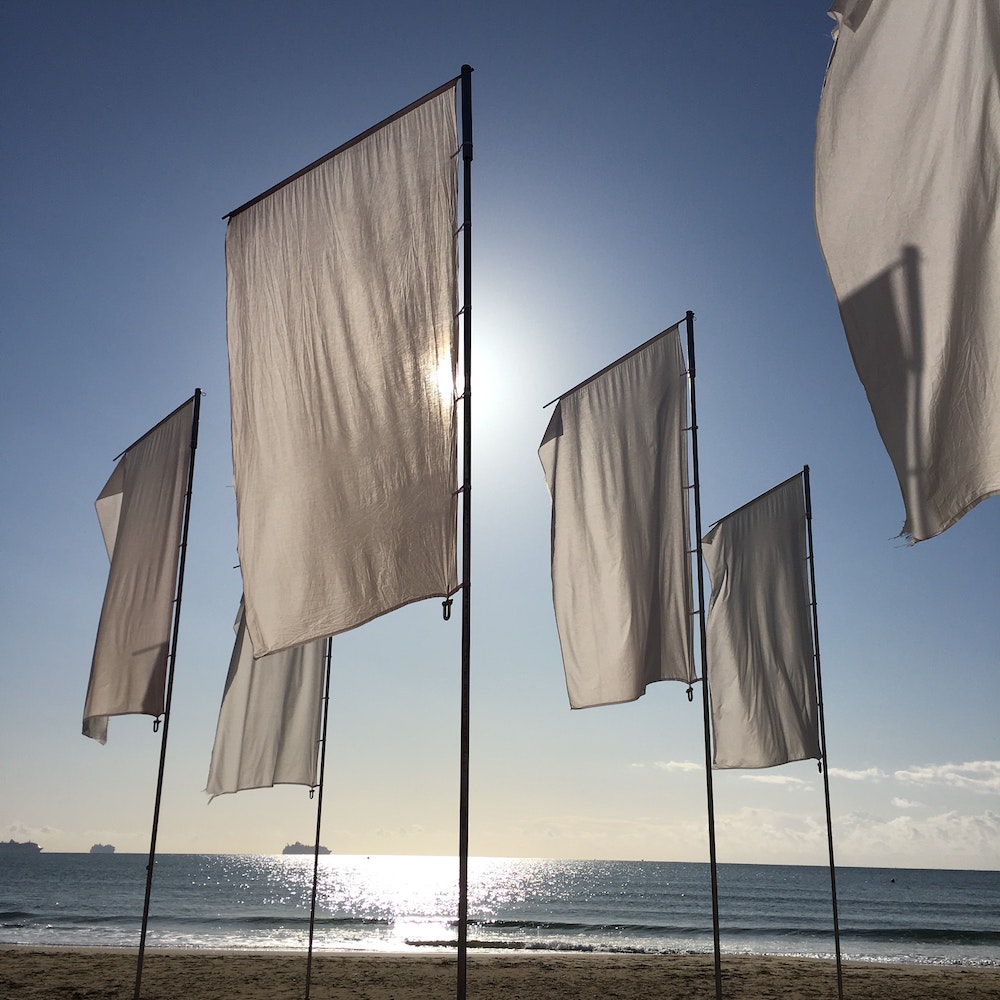Choosing the best material for flags – particularly outdoor flags – is an important part of the flag design process. Flag material might not be the first concern when buying or making a flag. But whether you want to make a flag for your business or another purpose, it’s important to know what to consider. Possibly the most important component to think about is the flag material chosen.
Unlike hanging a poster on the wall, hoisting a flag outdoors means the flag fabric material is going to be constantly exposed to the elements. The flag fabric needs to withstand everything from strong winds to heavy rain, from freezing temperatures to sweltering heat.
A general understanding of types of flag material and the best material to make an outdoor flag, you’ll be able to make the right decisions when it comes to designing and making your flag.
What material are flags made out of?
Flags in Australia and around the world are made from a variety of materials. The flag materials chosen is dependent on the purpose and location of the flag. The three most common types of flags are constructed from polyester, nylon or cotton. Cotton is primarily limited to indoor usage. While wool, linen and silk have also been employed over the years to make flags, these materials are largely absent in flag making today.
Instead, a robust cloth blend – like canvas – is a now common way of ensuring the flag material withstands the elements.
Additionally, many flag materials these days are designed to be printed on. There are different printing methods for various applications, but if you want a design printed on the flag, you’ll need to select a flag material that is appropriate for that purpose.
Printed Flags
Many printed flags are made from thin, lightweight materials. Printed flags are one of the cheapest ways to make a flag with your design or logo, making them a popular choice. If this is the plan, talk to your textiles supplier about the best choice depending on your needs.
For outdoor printed flags, the more expensive option is to have the flag stitched and woven from materials of different colours and designs. Some flags are embroidered. The process is more involved and labour-intensive, and the result is a higher price tag. Since woven and embroidered flags tend to be thicker and heavier, they do not hold the same ability to fly in a breeze.
Any indoor flag is not being exposed to the wind, direct sunlight or other weather conditions. Theoretically, you could make a flag out of almost any material. However, keep in mind that if you want to print your design on the flag, you’ll still need a print-ready material to achieve this.

Indoor Flags
For an indoor flag that’s not being exposed to the wind, sunlight or other weather conditions, you could practically make a flag out of any material. Keep in mind though, that if you want to print your design on the flag, you’ll still need a print-ready material to achieve this.
What's the best Material for Outdoor Flags?
Unlike indoor flags, outdoor flag material requires heavy-duty sewing. You can’t make an outdoor flag out of any material that you desire. The flag material needs to be durable, weather-resistant and lightweight enough to move properly in the wind.
The most common outdoor flag material used is either polyester or nylon. These materials are extremely weather-resistant, fly well even in a slight breeze and maintain vibrant colours even with
long exposure to harsh sunlight. Flags made from nylon or polyester also fare well when used on boats, enduring exposure to saltwater.
It’s also possible for flag material to be hybrid. Hybrid flags, such as of polyester and other fabrics. Have the advantage of unique properties that increase the conditions the flag can withstand.
Nylon vs Polyester Flags
|
Nylon
|
Polyester
|
Pros
|
Nylon has long been the material of choice for commercial, residential, and industrial consumers because it can be easily manufactured. A less-intensive manufacturing process guarantees a more competitive price point. Additionally, nylon flags fly at the slightest breeze, dry quickly and are quite durable. The longevity of nylon makes it the more environmentally friendly option, too. |
Polyester is also an extremely popular choice of flag material because of its durability. Since heavy duty polyester can withstand high winds and bad weather, it works well for larger flags on tall flagpoles. Polyester’s extended lifespan also gives it appeal as a flag material, especially when it is robust in harsh conditions. Polyester also has the look and feel of cotton. |
Cons
|
Due to its extreme lightweight, nylon functions best in low to moderate winds. Anything higher runs the risk of damage to the flag. Therefore, nylon is less resilient than polyester in high winds. |
Polyester takes over 200 years to breakdown, compared to the 40 it takes nylon to breakdown. The surface of polyester is far less shiny than nylon’s appearance. Polyester is also heavier, meaning it requires high winds to fly properly. |
What About Cotton?
The reason cotton is not a contender for outdoor flag material is because it tends to be heavier and much more prone to wrinkles than polyester or nylon. Cotton works well as an indoor flag or banner, but it is not suited to being run up a flagpole outside.

Other Factors to Consider for an Outdoor Flag
It is worth considering if your flag needs to be fire-retardant. It depends on the chosen area or application for your flag. Fire-retardant cloth is an all-round a safer material. Many materials specifically designed for flag making have the fire-retardant feature built into them.
Additionally, consider using materials that are anti-static, crease-resistant and non-fraying for your outdoor flag. You won’t want a material that’s likely to rip and tear in a stiff breeze or periods of prolonged high winds, so remember to consider what conditions your outdoor flag is most likely to be exposed to.
Talk to the fabric experts at Ricky Richards
If you need the best outdoor flag material, get in touch with Ricky Richards. We’re all about materials and textiles and we’ve been serving Australian businesses and consumers for decades. We can help you out with flag fabrics no matter what the purpose, so get in touch today and have a chat with us about your requirements.